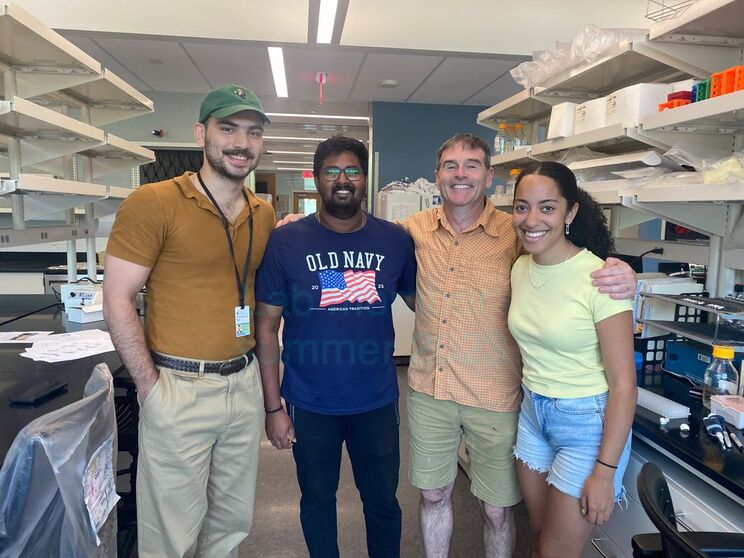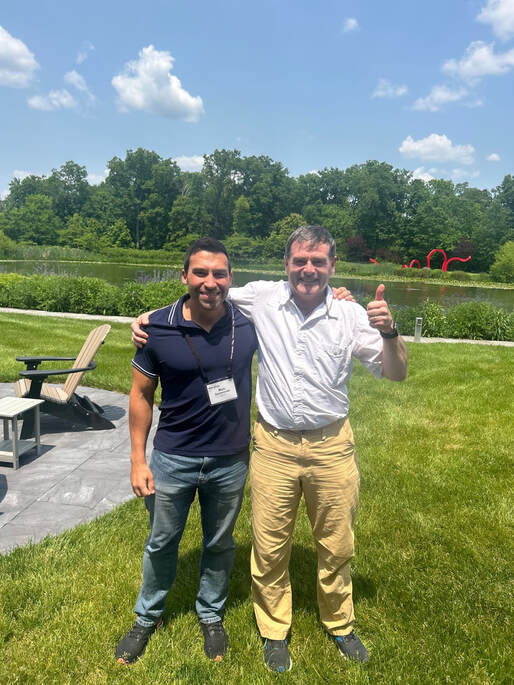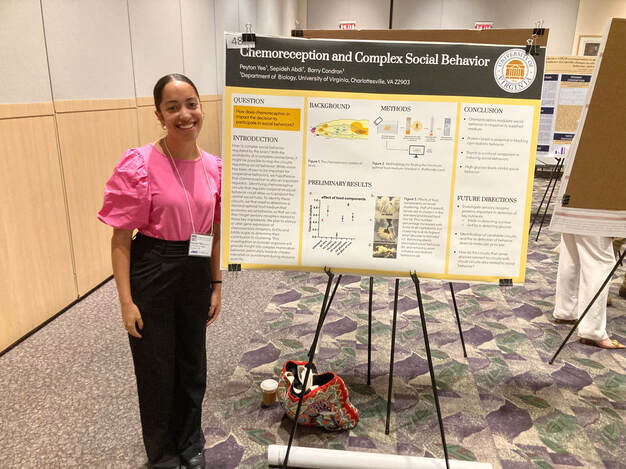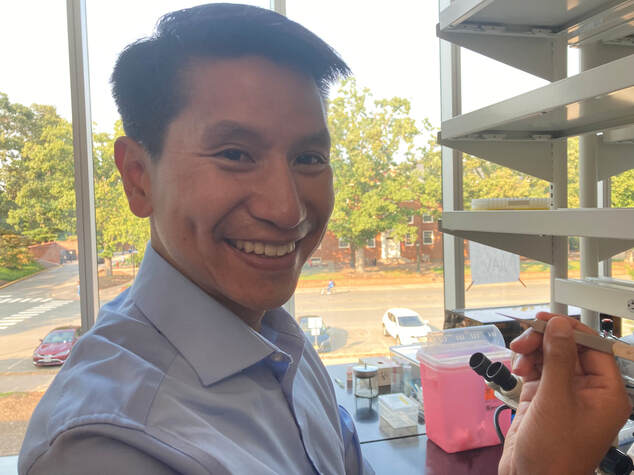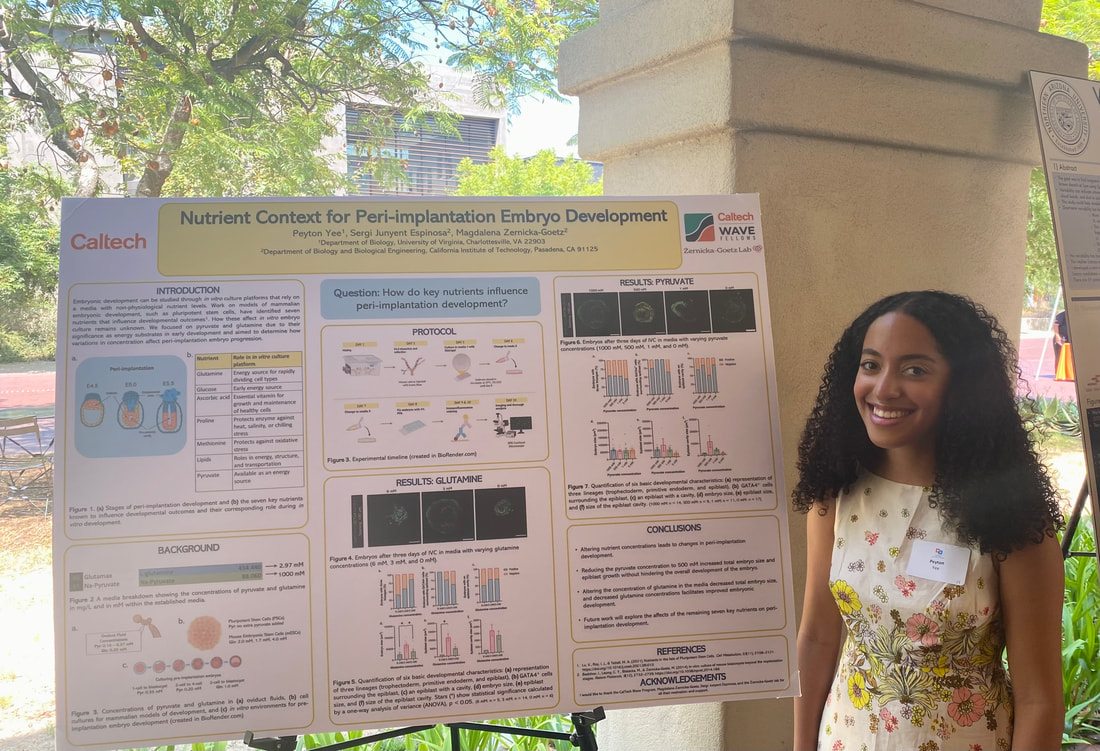Graduates 2024
New paper:
Liao, A., Qian, C., Abdi, S. et al. Population parameters of Drosophila larval cooperative foraging. J Comp Physiol A (2024). https://doi.org/10.1007/s00359-024-01701-w
Liao, A., Qian, C., Abdi, S. et al. Population parameters of Drosophila larval cooperative foraging. J Comp Physiol A (2024). https://doi.org/10.1007/s00359-024-01701-w
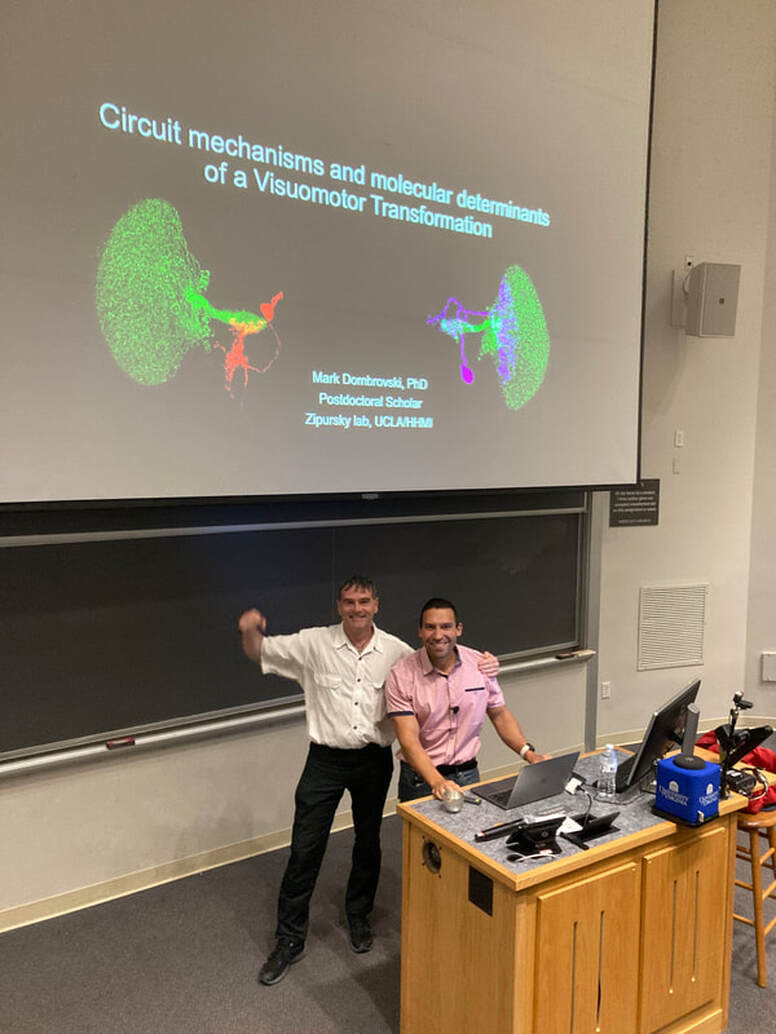
Mark Dombrovski gives the Fleming seminar at UVa
Lab MEmbers, Summer 2023
Met Mark Dombrovski at Janelia
Peyton Yee, at SfN Chapter meeting
John Chen, one of the first grad students from the lab visits. Finds his old forceps.
Peyton Yee presenting her work at a Caltech summer program
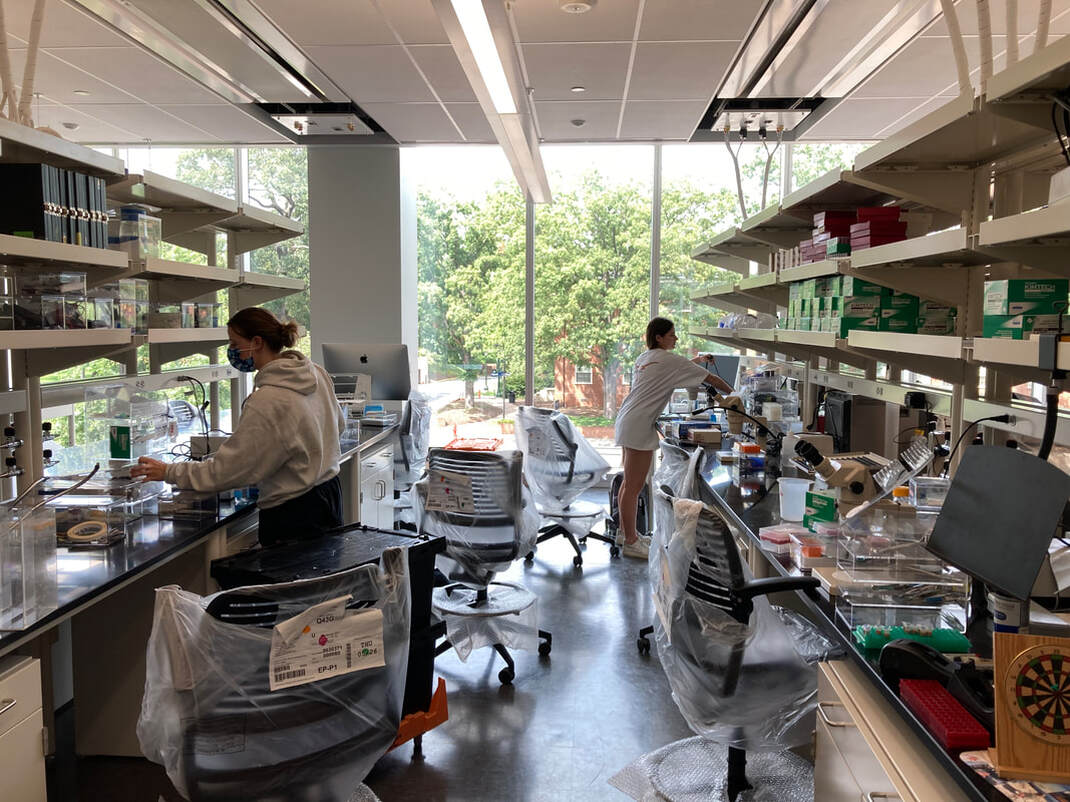
Move into our sparkling new lab!

Bridgett Bucci and Mariann Kazakis win first and third prizes for the Katz research symposium at UVa ($1000 and $500). A 38 year tradition at UVa.
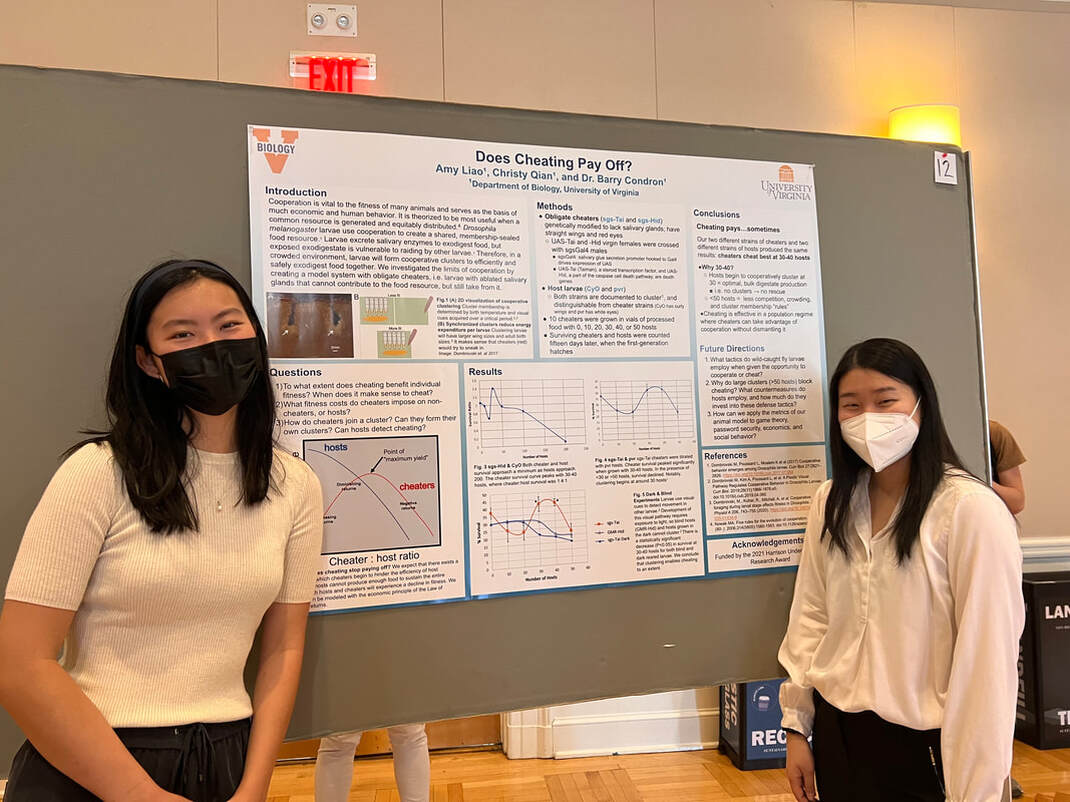
Amy Liao and Christy Qian win Harrison Awards and present their work.



